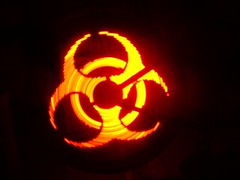It now appears that the CDC will investigate to determine if the disease is real:
Now, after a year or more of pressure from people who believe they have it, the Centers for Disease Control and Prevention (CDC) has agreed to investigate Morgellons to determine whether it's a real disease or a shared delusion. "Either way," said Dan Rutz, a CDC spokesman, "it's a public health threat."...
Fibromyalgia and Gulf War syndrome are also conditions that have been heavily researched and still have no identifiable cause. And doctors say they see patients every day who have symptoms for those and other hard-to-define conditions. The best approach is to admit that "we don't know what we don't know," said Dr. Don Deye, an internal medicine doctor at the Cambridge Medical Center in Cambridge, Minn.
"It's a mistake to consign these folks to psychiatric issues and that's the end," said Deye, who works with such patients to find treatments that are effective.
After all, illness is something uniquely experienced by an individual, said Dr. John Dyer, a professor who studies the history of medicine at the University of Minnesota. And a collection of symptoms becomes a disease not only when science finds a clearly identifiable cause, but also when society accepts it as such, he said. The medical history books are full of diagnoses that were popular for a time and then faded away. And they are also full of diseases that were at first mysterious and then proved to be devastatingly real -- such as AIDS. |Star Tribune|




No comments:
Post a Comment